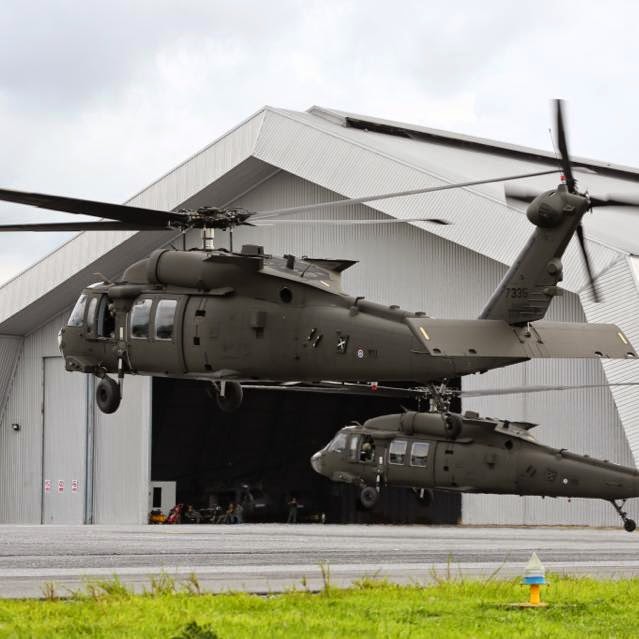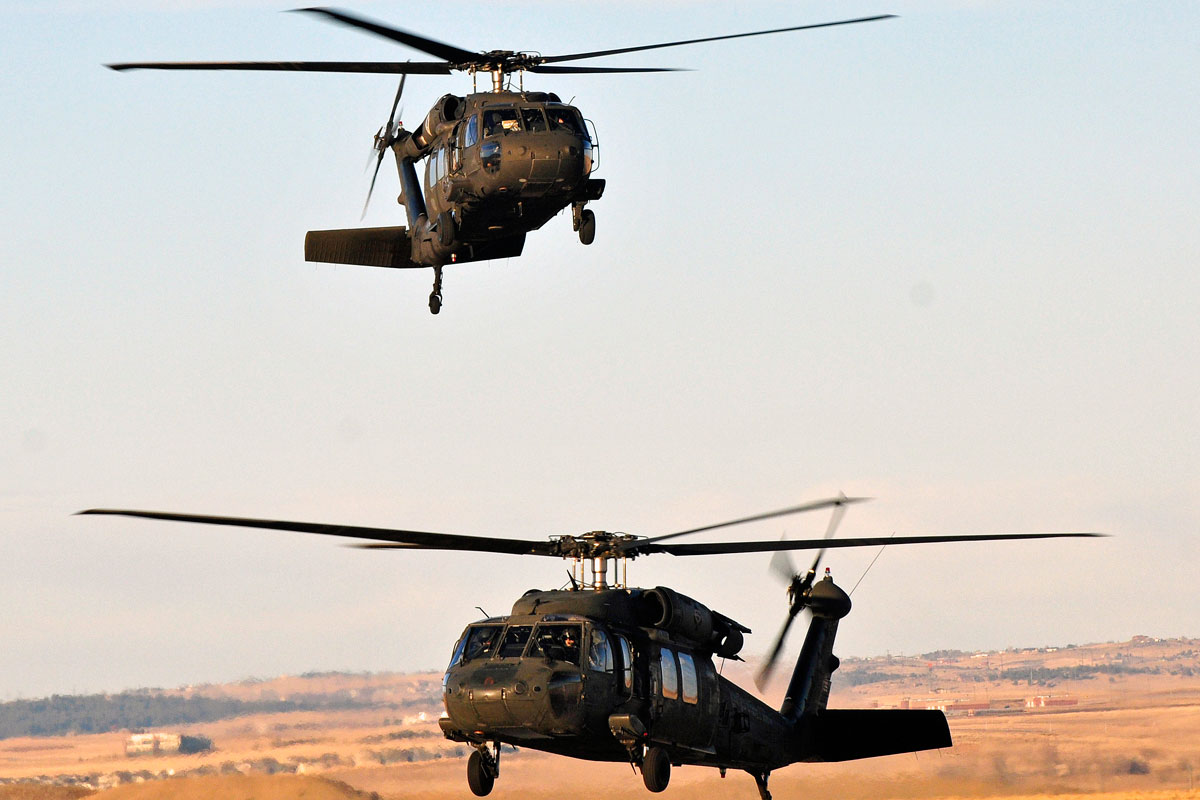Recognizing the Mechanics and Engineering Behind Uh 60 Helicopters
The UH-60 helicopter, commonly referred to as the Black Hawk, stands as a pinnacle of modern-day rotorcraft innovation, embodying a mix of robust engineering and intricate auto mechanics. From its inception to its present iterations, the development of this airplane showcases a combination of technology and functionality. As we peel off back the layers of the UH-60's design, a globe of intricate systems and careful design comes to light. Comprehending the technicians and engineering behind this flexible airplane unveils a realm where accuracy meets power, and where each element plays a critical role in accomplishing trip.
History of UH-60 Helicopters
The history of UH-60 helicopters traces back to the late 1970s when the USA Army sought a advanced and functional utility helicopter to replace its aging fleet. In feedback to this requirement, the Sikorsky Airplane Company developed the UH-60 Black Hawk helicopter. Presented in 1979, the UH-60 rapidly became a staple in armed forces operations as a result of its remarkable abilities.
The UH-60 was designed to succeed in a range of missions, consisting of troop transport, clinical evacuation, digital warfare, and unique operations. Its capacity to adjust to different functions made it a valuable property to the U.S. uh 60. Military and other army forces around the globe
Over the years, the UH-60 system has undertaken a number of upgrades and variants to enhance its efficiency and equal evolving objective requirements. These helicopters have seen extensive solution in problems such as the Gulf War, Afghanistan, and Iraq, showcasing their integrity and flexibility in varied operational atmospheres. The UH-60's abundant history is a testimony to its long-lasting legacy as a leading energy helicopter.

Engine and Power Systems
Making use of sophisticated propulsion innovation, UH-60 helicopters are geared up with innovative engine and power systems to make certain optimum efficiency and integrity in a variety of operational circumstances. The UH-60, frequently known as the Black Hawk, is powered by 2 General Electric T700-GE-701D engines, each with the ability of delivering up to 1,940 shaft horse power. These turboshaft engines provide the essential thrust for the helicopter to accomplish its objectives efficiently, consisting of troop transportation, medical discharge, and battle assistance.

Rotor System and Aerodynamics
Just how do the rotor system and aerodynamics of UH-60 helicopters add to their operational efficiency and trip capabilities? The blades system of the UH-60 helicopter plays a critical function in providing lift and propulsion. The UH-60 includes a four-bladed, completely articulated blades system that allows for high explanation ability to move and stability throughout flight. This layout allows the helicopter to perform a vast variety of missions, from transportation and medical discharge to fight operations.
The rules of aerodynamics additionally play an essential duty in the efficiency of UH-60 helicopters. The streamlined fuselage and blades blade design minimize drag, permitting the helicopter to achieve greater rates and better fuel performance. The aerodynamic layout of the UH-60 also adds to its capacity to operate in diverse ecological problems, consisting of high altitudes and hot temperature levels.
Avionics and Flight Control Solution

In its intricate coordination with the rotor system and the rules of aerodynamics of UH-60 helicopters, the avionics and trip control systems create an essential network of innovations shaping the useful reference airplane's functional abilities. Avionics include the digital systems made use of for interaction, navigating, and monitoring different airplane functions. In the UH-60, these systems include digital screens, communication radios, GPS navigation, weather radar, and autopilot systems. These avionics systems provide important info to the pilots, improving situational understanding and making sure efficient and safe operation of the helicopter.
The trip control systems of the UH-60 are responsible for translating the pilot's inputs right into the proper adjustments to the blades system, making certain stable trip and maneuverability. These systems include hydraulic actuators, servos, and computer systems that interact to regulate the primary and tail rotors, in addition to various other flight control surface areas. By specifically handling the helicopter's trip dynamics, these systems make it possible for pilots to do a large range of goals, from transport and search-and-rescue to combat operations, with accuracy and confidence.
Duty and Applications in Air Travel
Avionics systems in UH-60 helicopters encompass a variety Click This Link of digital systems that aid in navigation, communication, surveillance, and regulating different airplane features. These systems consist of digital screens, autopilot systems, communication radios, General practitioner navigating tools, and weather condition radar. Furthermore, these systems integrate security features such as auto-pilot settings, terrain awareness warning systems, and security enhancement systems to improve the overall safety and security and functional abilities of the UH-60 helicopters in various goals, consisting of troop transportation, clinical evacuation, search and rescue, and airborne firefighting.
Final Thought
In final thought, the UH-60 helicopter is a versatile airplane with a rich background and progressed engineering. Its engine and power systems, blades system, aerodynamics, avionics, and trip control systems all function together to make it a dependable and reliable equipment. The UH-60's function and applications in aviation are huge, ranging from army procedures to browse and save objectives. Its proceeded development and usage demonstrate its relevance in the field of aeronautics (uh 60).
In its intricate sychronisation with the blades system and the rules of aerodynamics of UH-60 helicopters, the avionics and flight control systems develop an essential network of modern technologies forming the aircraft's operational abilities.The trip control systems of the UH-60 are responsible for equating the pilot's inputs into the ideal adjustments to the rotor system, making sure secure trip and maneuverability. Avionics systems in UH-60 helicopters encompass a variety of digital systems that help in navigating, interaction, monitoring, and controlling various aircraft features. Furthermore, these systems include safety features such as autopilot modes, terrain awareness cautioning systems, and stability augmentation systems to improve the general security and operational abilities of the UH-60 helicopters in different objectives, including troop transport, medical discharge, search and rescue, and airborne firefighting.
Its engine and power systems, blades system, the rules of aerodynamics, avionics, and trip control systems all work together to make it a effective and reputable device.